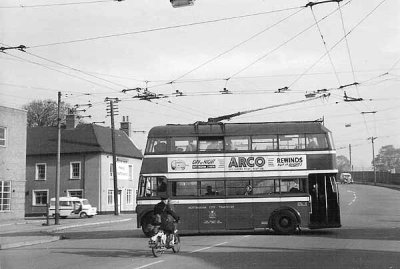Nottingham used to run a vast network of trolleybusses. The first trolley was introduced in 1927 and in 1930 it had the largest fleet in the country. The last trolley bus operated in Nottingham until June 1966. Recently a new book was launched on the history of Nottingham’s Trolleybusses, and it does raise the question if bringing them back might become the way forward in making our public transport system ready in the face of climate catastrophy.
Some cities in Europe are upgrading their trolley bus networks and some are even planning the construction of new ones. With Britain having such as vast history on the ‘old trolley’, wouldn’t it be worth looking into the possibility of returning to this potential zero-emission way of transport?
Like other electric vehicles, trolleybuses are often seen as more environmentally friendly than fossil fuel or hydrocarbon-based vehicles (gasoline, diesel, alcohol, etc.), but the power is not “free”, having instead to be produced at centralised power plants, with attendant transmission losses. On the other hand, centrally-produced power has the advantage of being more efficient, not bound to a specific fuel source and more amenable to pollution-control as a single-source supply than are individual vehicles with their own engines that exhaust noxious gases and particulates at street level. Moreover, some cities, like Calgary, Alberta, run their commuter light rail networks using wind energy, which is effectively emission-free once the turbines are built and installed. A further advantage of trolleybuses is that they can generate electric power from kinetic energy whilst braking, a process known as regenerative braking.

 e-mail:
logistix@riseup.net
e-mail:
logistix@riseup.net
 Homepage:
http://en.wikipedia.org/wiki/Trolley_bus
Homepage:
http://en.wikipedia.org/wiki/Trolley_bus
Comments
Display the following comment